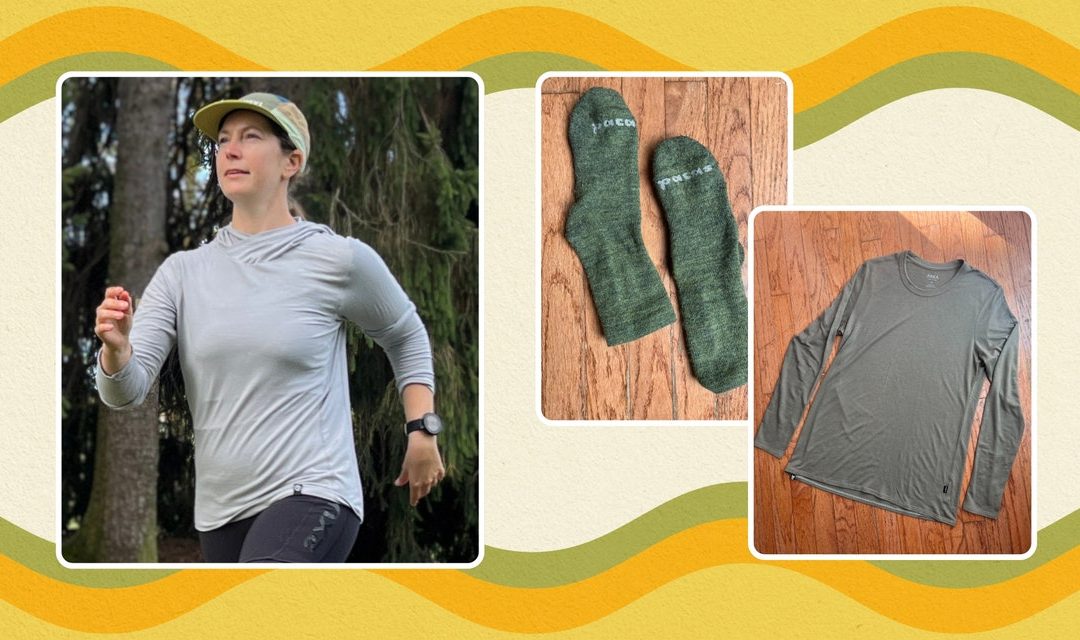That’s likely because alpaca fiber is naturally odor-resistant. “Alpaca fiber has a waxy coating and low moisture retention,” Dr. Sokolowski explains. “This enables dirt to shed off the fiber, preventing the growth of odor-producing bacteria.”
The material stays “fresh” not only smell-wise, but also when it comes to durability over time. An older, 2005 study found that alpaca fibers take longer to break than wool ones, which means the cloth is more likely to withstand pilling and less likely to wear out. Similarly, a 2021 study found that alpaca fibers are more elastic than sheep’s or goat’s wool.
This matches up with my own experience. I wore my Paka base layer at least once a week last winter, putting it through both the washer and dryer every Friday, and the fabric still feels like new, with no pills in sight. If anything, I’d say it’s only gotten softer.
It’s both warm and breathable
One of the main reasons I reach for my alpaca gear so often in the cold is because when I slip it on, I know I’ll be warm, despite how thin the material is. This makes it ideal for layering under a running jacket when I’m getting my miles in. Or, if I’m staying in, I’ll zip up the Paka Breathe Women’s Zip Hoodie ($179, pakaapparel.com) for extra coziness.
Original photo by SELF writer Jennifer Heimlich
Original photo by SELF writer Jennifer Heimlich
Paka Breathe Women’s Zip Hoodie
At the same time, I’m always surprised by the fact that I don’t overheat while running in alpaca gear when temps tick up to a balmy 55 degrees or so. In the spring and fall, I’m able to comfortably wear long sleeve alpaca tops on speedy runs in the sunshine without getting too hot (as long as I’m rocking shorts on my bottom half).
Alpaca wool is marketed as “thermoregulating,” which honestly sounds too good to be a real thing. However, “there is truth to these claims,” Dr. Sokolowski says. She explains that because alpaca fibers have a hollow core, they trap air, which can help insulate you from the heat or cold. They also wick moisture away from your body instead of retaining it, so you’re less likely to end up soaking in your own sweat (unpleasant).
Bottom line
Alpaca has become my go-to for making chilly days less miserable. It keeps me comfy but not claustrophobic, and I can go surprisingly long without washing it if I have to, which is a major bonus in my book.
I’ve found the biggest limitation to my alpaca love is that there’s not a huge array of options out there for activewear. Lululemon makes a cropped alpaca and merino-blend sweater ($128, lululemon.com) and cardigan ($148), and Quince sells a baby alpaca-wool crew sweater ($50, quince.com), but those aren’t exactly designed to work out in. REI carries Arms of Andes, which is more in line with Paka and Pacas, but all three of those brands focus on pretty simple styles.
Lululemon
Alpaca Wool-Blend Cropped Sweater
Lululemon
Women’s Alpaca Wool-Blend Cardigan Sweater
Quince
Baby Alpaca-Wool Crew
Arms of Andes 160 Ultralight Alpaca Wool Crew Neck Base Layer T-Shirt
Arms of Andes 300 Lightweight Alpaca Wool Base Layer Leggings
Arms of Andes 160 Ultralight Alpaca Wool Long-Sleeve Base Layer Shirt
I’m hoping that more activewear brands will catch on to the magic of alpaca wool soon. But if you’re just looking for straightforward basics that will keep you warm, dry, and smelling fresh for days, I can tell you this: It’s hard to beat what alpacas have to offer.
Get more of SELF’s great product recommendations delivered right to your inbox (for free!).
Related:
